Doggie daycares are a popular way to help your pup burn off excess energy and stay entertained while you work long hours. But like everything in life, not all doggie daycares are created equal.
From your dog’s preferences to your wallet’s realities, there’s quite a bit to consider when looking at doggie daycares. Let’s figure out how to get your pup into a daycare that meets your standards and that your dog loves!
What Does My Dog’s Day at Daycare Look Like?
Your dog’s day at daycare will vary greatly based on what sort of daycare you pick. Let’s take a look at a few different options for an “average day.”
(Beforehand) Temperament Test and Trial Visit. This takes place before you leave your dog for good. If a daycare doesn’t mention this, ask if you can do one anyway. This helps you get a good idea of how your dog feels.
Keep in mind that the staff are likely to have slightly “rose-tinted glasses,” about how your dog likes doggy daycare, since they’re a business. Trust your gut. If all goes well, then your dog can keep coming back!
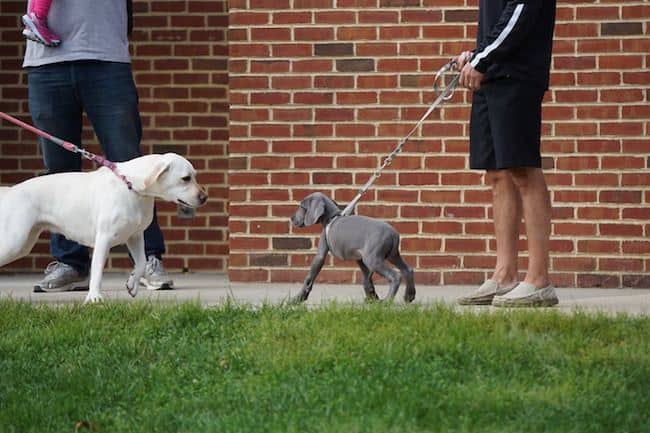
Drop off. Pass your dog off to the staff. You’ll also hand off food and medications if needed.
The Majority of the Day. Your dog will probably be in one of two environments: a play group (indoors, outdoors, or indoor/outdoor), or a kennel/run environment.
Generally, doggie daycare is basically just letting the dogs do what they want during the day. Staff at most facilities will only intervene if there’s aggression.
- Space Design: The setup can vary greatly. The vast majority of doggie daycares are relatively barren rooms, play yards, or indoor/outdoor space. Your dog basically spends all day in a room with 5-30 other dogs. They rarely get the chance to sleep and often experience play style mismatches. That’s why I don’t really like “average” daycares!
- Size: There’s no real average size for a doggie daycare, since it will vary based on what size dog is in the area and how many dogs they allow at once.
Some daycares will have both kennel runs and play yards. This allows dogs to take breaks and even nap if necessary.
Feeding. If your dog gets a midday meal, he’ll also get this at daycare. If you pick up late or drop off early, some doggie daycares will also offer breakfast and dinner. Don’t forget his kibble if you opt for this!
Pick Up. You’ll get the dog back and have a chance to ask about her day.
Here’s a video of what one dog’s doggie daycare experience looks like. This daycare is certainly nicer than the average, with plenty of things to climb on and workers to play with!
Factors to Consider When Picking a Doggie Daycare
Of course, my idea of a perfect doggie daycare might not be yours. We all have different commutes, budgets, and dogs. Still, this is a pretty solid list of what most owners will probably be looking for in a doggie daycare.
1. Legality
Each state has a different set of laws surrounding doggie daycares – though there are no federal requirements within the U.S. Do a quick Google search for “doggie daycare laws + [your state or country]” to see what comes up.
Ensure that your chosen daycare complies! This is not just a matter of rewarding good behavior in business owners, but a matter of safety for your dog. Sanitation requirements, heating and cooling, ventilation, and storage of chemicals must all be up to snuff to keep your pup safe.
Each state’s legal requirements on this may vary, but daycares should adhere to them at minimum.
2. Group Size and Dynamic
Not all dogs are into free-for-all play. Big groups of dogs can be dangerous and difficult to manage for staff. I consider groups of more than four or six per present and observant staff-member to be a red flag.
Small dogs, old dogs, or injured dogs should be able to get extra space, a break from the other dogs, or a private playgroup.
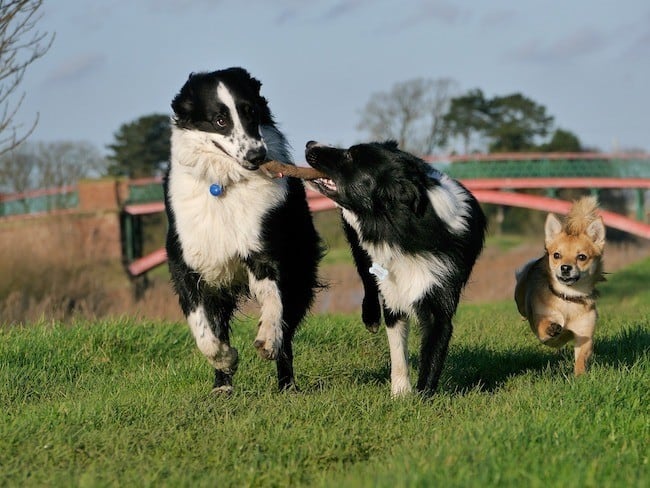
Many daycares essentially throw all of the dogs into a single indoor, outdoor, or indoor-outdoor run. That’s 20 or 30 dogs with no toys and just a huge gymnasium! Even dogs that love the dog park can get pretty tired (and cranky) after eight hours of dog-on-dog play.
For example, this doggie daycare is the top result for “amazing doggie daycare” on YouTube right now. When I look at this, I see way too many dogs and far too little supervision. I’d never leave my dog around such a crowded pool with so little supervision!
More and more good daycares are breaking dogs up into groups based on size, energy level, and/or play style. This is much better for the majority of dogs.
Some dogs might even prefer a kennel-style doggie daycare, where each dog is kept in an individual kennel or run and given walks during the day.
My own dog, Barley, would rather be left alone by most other dogs. He makes some friends, but otherwise, he’s happy to sniff and sleep alone. This means that he’s not a great fit for many doggie daycares that are centered around dog-free-for-all playtime. He might do well in a small group of like-minded dogs, but he’s happiest (I think) with a dog sitter or just hanging at home.
3. Proximity to Your Commute
Unless you’re really into making big daily detours, your doggie daycare decision will be heavily influenced by where the daycare is in relation to your commute or home.
4. Daycare Rules and Regulations
Each doggie daycare will have its own rules and regulations, so be sure that they work for your dog. Some doggie daycares don’t allow specific breeds of dogs like pit bulls or Akitas or have obedience class requirements before your pup can join.
I also like to know how the facility deals with dogfights (they’re bound to happen) and discourages unwanted behavior. If the staff doesn’t seem knowledgeable about safely breaking up a dogfight or changing behavior without yelling or leash-yanking, take your business elsewhere.
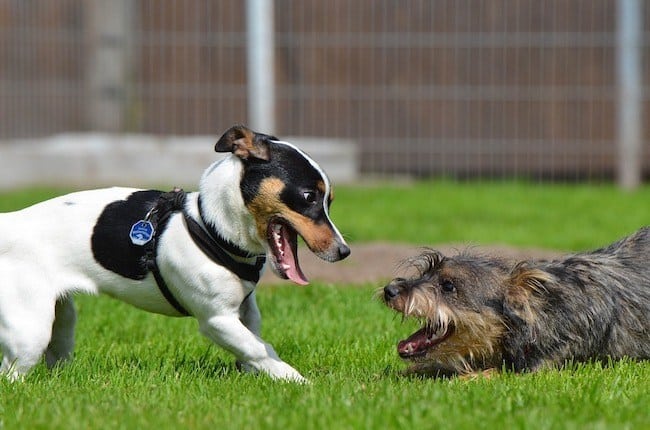
5. Hours
If you generally work 6am to 3pm but doggie daycare opens at 7am, you’re in a pickle! Find a doggie daycare with hours that fit your work life, (and make sure to allow for bad traffic days).
6. The Consistency of Guests
Just like you might not like going to a mosh pit every day with a bunch of strangers, many dogs prefer to have their “friends” that stay the same at daycare. This is especially important for more introverted, small, or sensitive dogs.
7. Things for the Dogs to Do
If you walked into a preschool and saw no toys, slides, or other things for the kids to do, would you be impressed? Likewise, a good doggie daycare will have different things for the dogs to do. A barren room full of dogs is just inviting dogs to do nothing but pick on each other all day!
This doesn’t have to be anything fancy! Some agility equipment, plastic kid play-houses, or DIY dog playground builds work just fine.
Having equipment or physical structures for the dogs to engage with is even more essential when the daycare area is indoors. If the daycare area is outdoors and has tons of space with real grass, trees, and bushes for the dogs to sniff and engage with, a ton of additional equipment isn’t always as necessary (although it’s still preferred).
But an indoor area with cement flooring or fake grass with no sniffing or enrichment opportunities is just a disaster waiting to happen!
8. Knowledgeable Staff
It’s important to have staff members that are knowledgeable about resource guarding While most dogs will be happy to share tire swings, stairs, and toys, staff members should know how to address the warning signs of dogs that don’t like to share in order to keep everyone safe!
Ask about the qualifications of staff members, what their background is, and what kind of training they undergo before joining the doggy daycare team.
9. Follow-Up Report Cards
Really good doggie daycares will provide written report cards of your dog’s “ins and outs” of the day, what he did (both activity-related and bathroom-related), and how the day went in general.
This is a great way to learn more about how your dog really feels about doggie daycare. If Lucky gets into scuffles with other dogs nearly every day, he might not be having much fun at doggy daycare!
10. Video / Live Streaming Option
Watching your dog’s day on a live stream isn’t just a way to kill time at work — it’s also a great way to double-check on how the daycare is run during the day. Plus, being able to check in on your pup during the day will make you miss him a bit less!
11. Rest Time and Space
The majority of dogs will need a break at some point during a day of play. Even if it’s not a mandatory nap time, good doggie daycares will have a way for dogs to take a break during the day if they need a break from their yappy playmate.
Some daycares will have “quiet time” where the dogs go into separate runs, kennels, or crates. Others will just have a separate space, like an office or a kennel, for dogs that need a break.
12. Add-Ons and Bonus Activities
Many daycares offer quiet rooms, training sessions, pools, or even hikes. If you’re interested in getting some extra training or exercise out of your dog’s day, prioritize these add-ons!
Check out the amazing add-ons at this daycare in Pasadena! There’s so much for the dogs to do, and it seems like this is the small-dogs-only room.
Personally, I highly value the skills of the staff and a doggie daycare facility that allows for socially selective dogs to relax away from rowdy adolescent dogs.
If you’ve got a big, happy-go-lucky dog that just loves every dog, you might be more concerned with finding a facility that has swimming and plenty of playmates!
How to Assess a Doggie Daycare
Whenever I’m trying to find something for Barley (especially if I won’t be there to see how he likes it), I do my very best to find the worst horror stories online from the place. I try to convince myself that the facility or trainer isn’t good enough.
If I come up empty handed (or with a few Yelp reviews out of a hundred that can be explained and understood), I go for it.
Online Research and Customer Ratings
Start with online research – what do you find when you Google the facility’s name? Mostly good reviews, or a really mixed bag?
Ensure that you actually read the testimonials, since you’ll get more details on why people gave a given star rating. For example, I recently was nearly scared off from a Rover sitter for Barley due to a one-star review. Then I read the full review: it was glowing. The reviewer simply didn’t know how to leave a star rating and had mistakenly marked the sitter with one star!
Even when bad reviews aren’t a technical error, I’ve seen one-star ratings when someone was just angry that a daycare closed on a holiday or closed too early. To me, those frustrated customers are being unreasonably vindictive and can be safely ignored.
While a few angry reviews thanks to kennel cough are to be expected, ensure that you don’t see reports of injury caused by other dogs or staff!
Go For a Doggie Daycare Visit
Once you’ve narrowed your search to one or two daycares, go visit. Look around the facility and ask what sort of training the staff has. Be sure to ask about:
- Breaking up dog fights
- Giving dogs break time
- Preventing resource guarding
- Creating cohesive playgroups
- Sanitation
- Rules, regulations, and hours
Then, use your own eyes, ears, and nose.
Of course, the facility will smell like dogs – but does it reek? The dogs might be barking, but is it a cacophony of howls and whines? The dogs are playing, but are they showing lots of calming signals?
Hopefully, your test day and staff interview will help you figure out if your dog is super-scared of daycare, like this little white dog. This doggie daycare looks like a pretty bad setup, with far too many dogs and a small space. The staff member isn’t helping out a dog that’s clearly terrified, and I’d consider what’s happening in this video disqualifying if I was looking for a daycare:
Test Day & Question The Staff
If all is well, go ahead and test out the daycare for a day! If the facility has video streaming to check up on your dog, use it.
At the end of the day, ask the staff how it went. Don’t just ask if Rover “had fun.”
Instead, ask the staff members:
- What he did all day
- If he got any rest
- If he had any “arguments”
- If he had any new “friends” that he liked best
- About his ins and outs (what he ate and if he pooed)
- If anything seemed to make him especially happy or worried.
Detailed answers to these questions let you know that staff members are really paying attention to the dogs! Plus, you’ll be able to learn valuable information about your dog’s day.
If you’re satisfied with all of this, then go ahead and stick with the daycare place.
Doggie Daycare Q & A
How Do I Know How My Dog Feels About Doggie Daycare?
Pay close attention to the reports from daycare staff and video from the facility. It’s always helpful to make it clear to the staff that you’d like to hear if your dog has a rough day — keep the lines of communication open with them!
If your dog starts hesitating at the door to daycare, listen to him. It’s also a warning sign if your dog greets you with frantic enthusiasm at the end of the day. Of course, your dog should be happy to see you — but not over-the-top if that’s not how he normally greets you after you’re apart.
While doggie daycare sounds like a fun idea to owners, the truth is that many dogs don’t love daycare and would rather stay home.
You are not a bad owner if you leave your dog at home especially if that’s what your dog prefers! Leaving your dog at home might be the better choice for some dogs.
That said, if your dog pulls you towards daycare with a wagging tail, he’s probably having a grand time!
Trainer Tyler Muto talks a bit more about why doggie daycare ain’t for everyone in the video below:
Is Doggie Daycare Good for Puppies?
Puppy-specific doggie daycare can be a great option, as long as all sanitation and care is done up to a vet’s specs. Aside from a few well-behaved adult helper dogs, most doggie daycares don’t allow puppy-adult mixing.
Not all adult dogs understand to be gentle and patient with nippy and small puppies. A “correction” from an adult dog can easily scare your puppy — potentially for life.
The socialization benefits of a puppy daycare can be really valuable, but if you’re looking for a puppy-specific daycare, it’s even more important to ask about rest time an structured play.
It’s incredibly important for puppies to learn to be calm around other dogs, not just to play with them.
Programs like Puppy Day School at Canine Coach are some of the best I’ve ever seen, and are absolutely an excellent option for puppies! This program includes crate time with Kongs, grooming prep, training basic skills, and playtime with puppies and skilled adult “helper” dogs.

Are There Good Alternatives to Doggie Daycare?
To lay my cards on the table, I’m not a huge fan of doggie daycare for many dogs. Many doggie daycares basically turn into all-day mosh pits for the dogs, teaching the dogs to play nonstop and giving them all sorts of bad manners.
While some dogs are true social butterflies that love doggie daycare and dog parks, the majority of dogs aren’t! They’re bullies, wallflowers, or just plain awkward. There are far less socially tense ways to exercise your dog during the day.
Some of dog park alternatives and doggie daycare alternatives out there are:
- Rover or Wag sitters. Many Rover or Wag sitters will watch your dog in their home while they work from home. This is a great option for dogs that don’t thrive socially at daycare. Dogs that are nervous, aggressive, or just plain socially awkward will love this compromise!
- Friends, family, college students, and other local non-professionals. Just like Rover or Wag, local connections can help by taking your dog for the day in a smaller environment.
- Dog walkers. If your dog doesn’t really need all-day care, why not just hire a midday walker?
- Leaving your dog at home. Some dogs that are shy with new people and/or dogs might really just be happier being home alone. Just like some humans, some dogs really just prefer their “in group” and like sleeping on the couch all day. There are plenty of stimulating activity dog toys and other ways to keep your dog occupied during the day!
Since not all dogs like doggie daycare (and not all owners can find a decent option near their homes or within their budgets), you might want to look around for other options.
This is a sponsored placement, in which an advertiser pays a fee to be featured in this article. Learn more
$15OFF

Get $15 off your first Wag! dog walking or sitting service when you book through K9 of Mine!
Why Is My Dog Aggressive At Daycare?
Doggie daycare is an incredibly socially intense environment. It’s a lot like a rave, music festival, or mosh pit — for up to eight hours per day. Since many doggie daycares don’t break the dogs up into smaller groups of dogs with similar play styles or give the dogs nap time, it’s just too intense for many dogs.
That constant high-adrenaline play can lead to aggression in even the most mild-mannered dog. If your dog is starting to act out at daycare, even if it’s just a small “snark” or “squabble,” it might be time to look at alternatives for him during the day.
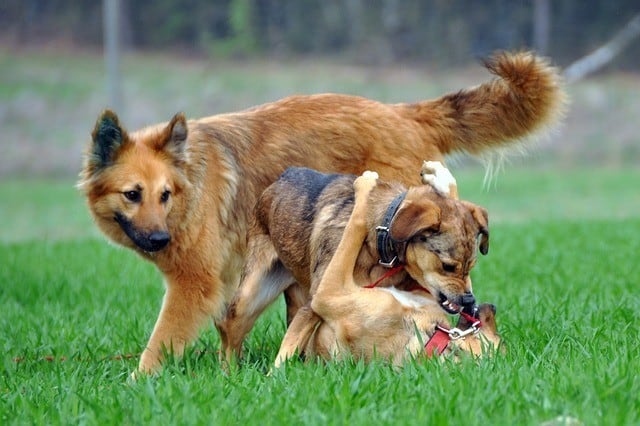
***
How did you find your dog’s dream daycare? How did you know he liked it? We’d love to hear your tips!
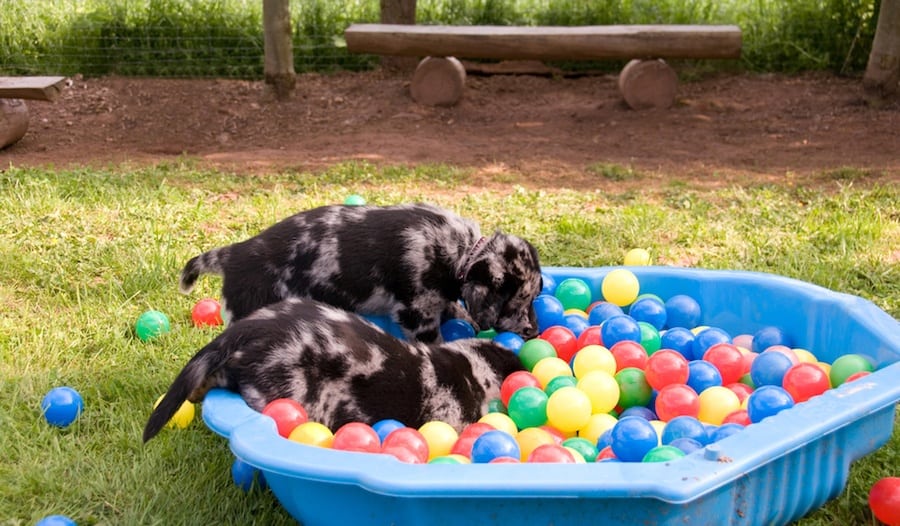



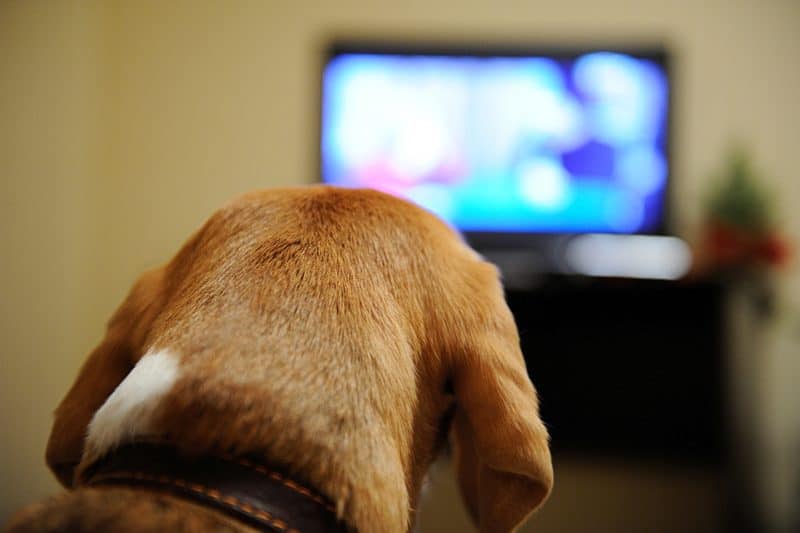
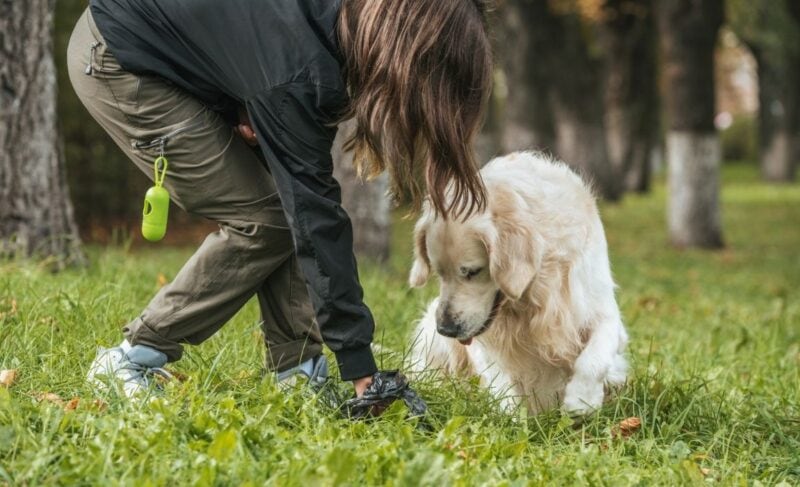
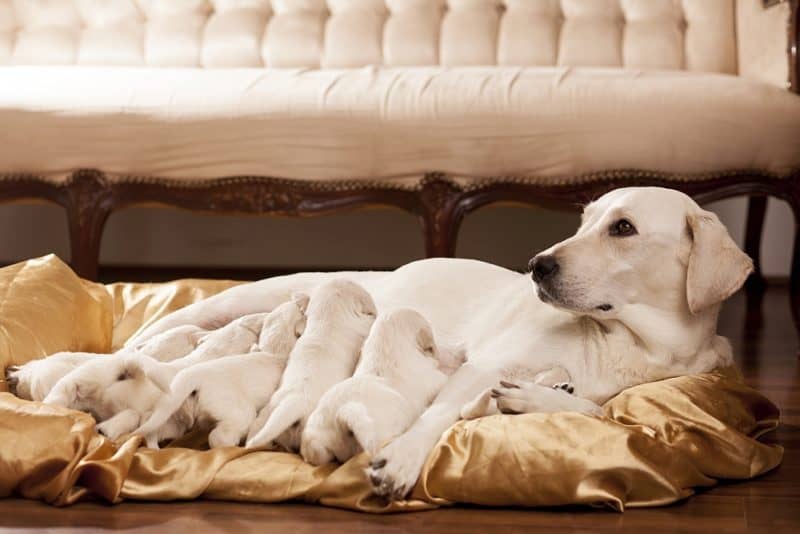

Leave a Comment